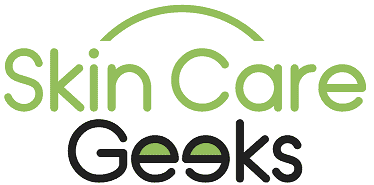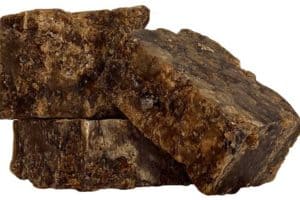Pimples are generally harmless blemishes that will disappear on their own with time. But it can be frustrating when you have a pimple that won’t pop. So, how to get rid of a pimple that won’t pop?
If a pimple doesn’t pop, avoid touching, picking at, or popping it to prevent further irritation. Try gently pressing it with a warm compress on it or applying over-the-counter treatments.
Most importantly, always keep your skin clean by washing regularly. If it still doesn’t pop, then consult a dermatologist who can customize an acne treatment for you.
Read on to learn more about why your pimple won’t pop and how to get rid of it.
How to Get Rid of a Pimple That Won’t Pop?

In case your pimple won’t pop, avoid touching, picking at, or popping it to avoid further irritation. Try putting a warm compress on the affected area or applying over-the-counter treatments.
It is essential to always keep your skin clean by washing regularly. If the pimple still doesn’t pop, it’s best to consult a dermatologist to get the best course of treatment.
As soon as you notice that pimples start to appear on your skin, it would help if you started treating them using home remedies or over-the-counter (OTC) medications. If your pimples don’t seem to disappear, schedule a visit with your dermatologist as soon as possible.
If you have a pimple that won’t pop, follow these below tips:
1. Don’t Touch It
You will always want to touch, pick at, or pop your pimple no matter what. For sure, you have already tried doing that. But doing so might lead to scarring and even severe infections.
Touching your pimple will only increase the chances of spreading the bacteria on other parts of your skin. That will somehow explain why pimples start appearing on other parts of your body. In other words, touching your pimple means you are not giving it the chance to heal.
2. Wash Your Face on a Regular Basis
Washing your face once in the morning and once in the evening will prevent oil from clogging the pores of your skin. If you have physical activities like working out, make sure to take a shower when you’re done.
However, please do not overdo it. Too much washing might irritate sensitive skin. Unfortunately, it can even make your pimples worse.
3. Put a Warm Compress on the Affected Area
Place a warm compress right above your pimple for about 15 minutes to help it release pus. Repeat this process as often as possible every day until the pimple disappears.
A warm compress is effective in opening up your pores. So, this is particularly helpful if your pimple is right under your skin and doesn’t seem to pop.
4. OTC Ointments, Creams, and Other Medications
Over-the-counter (OTC) treatments are available that you can apply on your whole face and body, not only on the pimple itself. This will not only treat existing pimples but also prevent new ones from appearing.
Among the common types of over-the-counter treatments are benzoyl peroxide, salicylic acid, and retinoids. Benzoyl peroxide kills bacteria that cause pimples.
Salicylic acid helps treat mild acne. Retinoids treat pimples with vitamin A. Stronger doses of these treatments are available with a prescription.

5. Cortisone
Cortisone is available as a shot or cream. It treats pimples by alleviating redness and inflammation. However, it doesn’t directly treat the root causes of pimples.
When using hydrocortisone cream, it is recommended to be paired with Benzoyl peroxide to make it more effective. While there are OTC cortisone treatments available, it is best to consult your dermatologist for specific instructions.
6. Prescription Medication
As earlier mentioned, OTC treatments for pimples are also available in stronger doses. However, they can only be bought with a proper prescription from your doctor.
Other prescription pimple treatments include dapsone gel and antibiotics.
To reiterate, if a pimple won’t pop, do not touch, pick at, or pop it lest it gets irritated and becomes worse. Instead, try placing a warm compress on it or applying OTC treatments.
Make sure to keep your skin clean by washing regularly. If it still doesn’t heal, consult a dermatologist for proper treatment.
7. Seek Professional Medical Help
If your pimple on your inner thigh doesn’t go away, here are the possible solutions a dermatologist might suggest to you:
- Incision and drainage might be administered if a collection of pus grows larger and larger under your skin. In which case, an incision will be done to release and drain out the pus.
- Antibiotics will be prescribed to you if you have a pimple that will not pop. It can either be a topical or oral medication that will help kill the bacteria.
- Surgery might be needed if the lump results from abnormal cell growth. The lump has to be removed and assessed to determine whether or not it is cancerous.
Again, if you’re asking why won’t my pimple pop, the best solution is that you shouldn’t touch, pop, or pick it. Try gently pressing it with a warm or cold compress.
Try applying your go-to over-the-counter drugs for pimples. And seek the help of a dermatologist if it still does not go away after a few days.
What to Do with a Hard Pimple That Won’t Pop?
Why won’t my pimple pop? If you have a hard white pimple that won’t pop, this could either be a nodule or a cyst. They are more inflamed and deeper than the common pimple. It is commonly called a blind pimple.
Similar to other types of pimples, this can be treated with home remedies. But if symptoms persist, consulting a dermatologist is always best.

For home remedies, you may try any of the following methods:
- Warm compress to help soften the lump and allow the release of pus. For blind pimples, it helps in making the head appear;
- A cold compress or ice packs to minimize pain and inflammation;
- OTC creams and ointments such as those containing sulfur, salicylic acid, and benzoyl peroxide;
- Non-soap cleansers are sometimes more effective than traditional soaps;
- Tea tree oil to help minimize acne lesions as well as the severity of an outbreak; and
- Vitamin-based creams.
Then, again, if all these home remedies do not work, immediately consult a doctor.
Pimple on Inner Thigh That Won’t Pop
A pimple on the inner thigh that won’t pop might not be a simple pimple at all. It might be a boil as it initially looks like a pimple at the start and grows bigger and more itchy or painful each day.
A boil becomes more and more swollen each day due to bacterial pus. It grows bigger and bigger until it breaks open and the pus drains out. There’s a likelihood that the infection will spread. In which case, you might experience fever or fatigue, or both.
However, a pimple on the inner thigh that won’t pop isn’t always a boil—other skin conditions such as insect bites, psoriasis, eczema, or cysts, among others.
How to pop a pimple that won’t pop? Don’t try to pop a pimple that won’t pop. If you experience having a pimple on your inner thigh or a pimple that won’t pop, observe it for a couple of days and don’t try to pop it again. If it gets worse, immediately schedule an appointment with a dermatologist.
Can a Pimple That Won’t Pop Be Associated with Skin Cancer?
Skin cancer has three types, namely, melanoma, basal cell, and squamous cell cancer.
A bump that looks similar to a pimple and doesn’t pop is a symptom of squamous or basal cell skin cancer. It also tends to disappear and then reappear on the same spot every so often.
This spot doesn’t necessarily have pus. However, it bleeds easily, it crusts over, and it is itchy. It may either have a dimple or a dark spot in the middle of the bump.
Squamous and basal cell skin cancers generally result from extreme exposure to the sun. Typically, the affected areas are the face, neck, head, and hands.
So, if you have this symptom, and even if you think it’s not a big deal, it’s always best to consult a doctor. Besides, even if it’s a mere pimple, it’s always best to know the proper way to treat it.
What Causes Pimples?
If you have noticed, some pimples heal on their own after a few days. Some last for a week, while some last even longer.
To understand how to get rid of a pimple that won’t pop, you must first understand what causes them:
1. Acne
An outbreak of pimples is called acne. It takes weeks or even months for acne to disappear. Unfortunately, even when it disappears, it tends to come back.
When bacteria, dead skin, and/or oil block your skin’s pores, you will likely experience acne. There is such a thing as severe acne, which causes painful red nodules under the skin. This happens when bacteria triggers inflammation and infection.
Acne doesn’t only appear on the face. It also appears on the shoulders, chest, or back. Acne is common among teenagers and, in general, it stops when they reach the age of 20. However, this isn’t always the case, even more so when the person has sensitive skin.
2. Cystic Acne
A severe kind of acne is called cystic acne. This occurs when dead skin cells and oil build up deep within the hair follicles. The buildups can rupture beneath the skin and may result in cysts.
This is why if you have acne, it’s best to consult your dermatologist. That way, you would know how severe your acne is. Furthermore, you will be given the right medications to heal it and avoid infections.
3. Fungal Acne
Fungal acne is another kind of acne. This occurs when a type of yeast called Pityrosporum gets deep into the hair follicles and multiplies. If you have fungal acne, your skin forms pink pimples that are really itchy.
If not treated, it can lead to acne-like ruptures. In most cases, fungal acne appears on the chest or back.
Pityrosporum is a yeast generally found in our body. Unfortunately, it has the potential to grow uncontrollably and, thus, results in fungal acne.
It isn’t fully understood what causes fungal acne, but it may be caused by various factors such as:
- Fatigue
- Stress
- Health problems like diabetes
- Medications like corticosteroids
- Oily skin.
Fungal acne can’t be treated with common acne treatments because it is caused by fungus. Instead, treatment should be specifically for fighting fungus.
Conclusion – Pimple That Won’t Pop – How to Get Rid of It?
A pimple that won’t pop should not be touched, picked at, or popped lest it gets worse. Instead, try placing a warm compress directly on it or applying OTC treatments. If your pimple still doesn’t pop, immediately consult a dermatologist to get the best course of treatment.
Having pimples is a common experience, most especially for people between 11 and 30 years old. Perhaps, all people experience having a pimple at some point in their lives. But not all people experience an outbreak of pimples or acne.
Whiteheads or blackheads are generally considered as mild acne. Whereas nodules, pustules, and papules are considered moderate acne. Tender and red nodules that are extremely itchy and painful are considered severe acne.
Initially, you can treat your pimple with home remedies. You can put on a warm compress, apply the topical or oral treatment, or wash regularly.
According to the American Academy of Dermatology, if home remedies do not work after one to two months, visiting a physician would be the best solution.
When you seek help from a medical professional, several recommendations will be given to you. You might be asked to undergo an incision, take a higher dosage of antibiotics, or undergo surgery.
There is a likelihood that you will be asked to take a higher dosage of medications. This is because you might need stronger medication to prevent getting serious infections.
It is also possible that your doctor will ask you to undergo an incision. This method will allow the release of pus under your skin.
Lastly, a physician might require you to undergo surgery. This is particularly true if the size of your pimple and the pain that you feel are alarming. The lump might have to be extensively assessed to determine whether or not it is cancerous.
Related reading:
How to Get Rid of a Pimple in an Hour?
How Long Does It Take for Skin to Clear Up?



